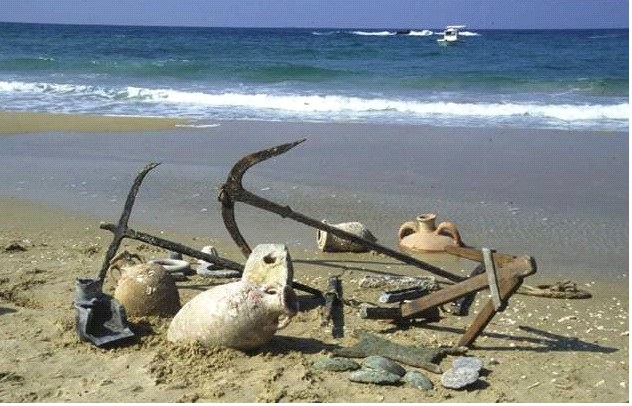Due to its geographic location the Land of Israel served as a meeting point for ships, goods and merchants, as well as armies and foreign populations that settled there over the course of history. All of these left behind abundant evidence of extensive maritime activity and habitation along the coast. A wealth of evidence of past activity is revealed to us: remains of prehistoric settlements submerged by the sea, ancient harbor structures, and shipwrecks laden with rich cargos such as pottery, weapons, artistic and cultic artifacts, raw materials. There are also industrial installations that were constructed along the coast such as piscinas for raising and storing fish and installations for producing purple dye and salt.

These remains are part of the country’s maritime cultural heritage and they are an important source for broadening and deepening our knowledge about its history and its relations with the maritime cultures of neighboring lands.
In fifty years of marine archaeological research many significant and unique remains have been discovered. As a result of this, the importance of underwater archaeology has become increasingly recognized as a scientific field of research while at the same time diving equipment has become more developed and readily accessible. This development, together with the discovery of many ancient artifacts on the seabed along the coast of Israel, led to the establishment of a marine supervisory body in the Department of Antiquities. With the establishment of the Israel Antiquities Authority the Marine Archaeology Unit was created with the aim of supervising and enforcing the Antiquities Law at sea; documenting and salvaging ancient remains; studying and publishing the finds, and raising public awareness about the Israel’s maritime heritage and preserving that heritage.
Click here to see the Virtual Gallery "Beyond the Sea"....
Text: Jacob sharvit
Editing: Enbal Betzalel - Pisetsky
Transaltion: Don Glick
Additional Articles ...